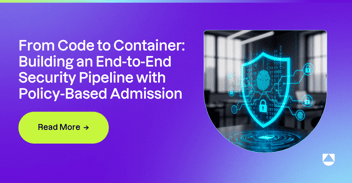Linux has become integral to many organizations' server and software infrastructure. While the OS is renowned for its scalability and performance, security remains a complex challenge. The need to manage Linux security at scale has become increasingly pertinent as organizations embrace cloud computing, DevOps methodologies, and microservices.
The perception that Linux is inherently secure can sometimes create a false sense of security. Linux environments are not impervious to threats; sophisticated malware and ransomware attacks increasingly target them. Linux's open nature can offer transparency but expose the system to vulnerabilities arising from misconfigurations, non-compliance, and general misuse.
If you're keen on bolstering your Linux security measures, check out our related eBook, 4 Golden Rules for Linux Security.
Let’s explore the unique challenges and best practices for securing Linux systems at scale, including specific tools and methodologies to consider. From addressing kernel vulnerabilities with eBPF to taking advantage of cloud-native solutions like Uptycs, we aim to provide a comprehensive resource for IT professionals managing Linux security in complex environments.
Restrict Access
The first step to securing a Linux system is to apply access restrictions. An intruder can gain unauthorized access to misconfigured servers. To reduce the risk, you can:
- Configure authentication policies like password complexity requirements and lockout periods for failed login attempts.
- Set appropriate privileges that define what users can access and modify.
- Use two-factor authentication to identify the user beyond just a username and password.
- Restrict root access to users who need it while denying Secure Shell (SSH) connections for unnecessary accounts.
- Place common user directories outside of the web server's document root.
Whether you're running Linux in the cloud or on physical premises, Secure Shell (SSH) is a crucial component. It serves as both a vital tool for managing remote access and a potential vulnerability for unauthorized intrusion. To truly grasp Linux security, it's essential to have a deep understanding of SSH and how to minimize the risk.
These measures can protect your Linux system from unauthorized access but can also be a headache to implement and maintain. Manual configuration is time-consuming, and ensuring the settings are correctly enforced can be difficult. Uptycs simplifies this process by automating user authentication policies with pre-defined access restrictions based on roles, not individuals.
Monitor User Activity
Once you've set up access restrictions, you should regularly monitor users and their activities. Detecting suspicious activities is essential, as it can help identify unauthorized access or malicious actions that have occurred.
You can use audit log analysis to detect potential threats to uncover unusual user activity. Audit logs are generated whenever someone performs a privileged operation, like logging in or out of an account. Comparing these logs against historical patterns can help identify unauthorized access anomalies.
Defining what qualifies as “unusual” user activity can vary significantly across different environments. Developing a comprehensive and nuanced list of activities that warrant investigation in your Linux environment is crucial. For instance, you might want to receive an alert when a user directly connects to a container or set thresholds for the maximum number of simultaneous logins per user.
It's worth noting that attackers often exploit commonly used Linux commands and utilities, making them challenging to detect. Furthermore, you may need to create whitelists and exception lists for specific rules.
Advanced Monitoring: Leveraging Uptycs and eBPF
To gain a deeper understanding of your Linux environment's security, combining multiple sources of threat intelligence data is invaluable rather than relying on isolated information. For instance, leveraging Uptycs to analyze Linux shell history alongside process events enables you to observe the long-term impact of network activity and user logins. This analysis allows you to drill down into command lines and SSH activity when necessary.
Uptycs enables real-time monitoring of audit logs, making it easier to detect suspicious user activities at scale. Its machine-learning algorithms analyze the data and generate alerts for suspicious activity within minutes, providing an integrated view of your security environment.
Beyond traditional audit logs, Uptycs leverages the power of eBPF for in-depth, real-time security monitoring. eBPF is a cutting-edge Linux kernel technology that offers a more stable and efficient way to gather telemetry data directly from the kernel. It provides granular visibility into system calls, network events, and more. This makes it especially useful for containerized environments, as it can correlate events across containers to offer a unified security perspective. To understand the depth of benefits eBPF offers, check out this detailed datasheet.
Automate Security Tasks
The final step is streamlining routine security tasks to ensure your Linux system stays secure. Keeping up with these tasks can be time-consuming, and failure to address them promptly can lead to severe consequences.
Using official Linux packages reduces the need for manual security patches. Linux handles feature and security updates separately, allowing automatic weekly security updates with official packages. Manual updates are reserved for features when necessary.
Uptycs compares your software with an updated list of vulnerabilities to streamline this process. It promptly alerts you when a patch is required, helping you identify vulnerable packages in your environment.
Reducing the burden of process work is one of the most challenging aspects of Linux security management. Automating and streamlining tasks such as aggregating, storing, and sharing security data is crucial to optimize efficiency. Doing so can allocate valuable time to higher-level Linux security work, specifically threat detection, and investigation.
Uptycs provides a comprehensive suite of tools for analyzing Linux events, offering over 150 tables and a wide range of pre-written alerts. These resources enable meaningful interrogation of data, which can be further customized to meet the specific requirements of your environment. As your team fine-tunes these rules to align with your unique setup, the signal-to-noise ratio will steadily improve. Ultimately, you will be equipped with the necessary information to investigate threats effectively and build a strong case for compliance with data regulations.
Uptycs simplifies managing routine security tasks with its built-in automation capabilities. Powered by machine learning, Uptycs continuously monitors for vulnerabilities, scans for app versioning discrepancies, and immediately alerts you when potential risks are identified. This helps reduce the effort and complexity associated with vulnerability remediation.
The Challenges of Traditional EDR or XDR Solutions in Linux Environments
As organizations grow, the complexity and scale of their Linux environments often outpace the capabilities oftraditional EDR or XDR solutions. These traditional tools may struggle to provide seamless coverage across different operating systems, incur higher costs due to multiple agents, or fail to offer the necessary scalability.
Thankfully, modern solutions like Uptycs are built to overcome these challenges, offering features like agent consolidation, rich security telemetry, and exceptional scalability tailored for Linux systems. For an in-depth comparison of Uptycs with traditional EDR or XDR solutions, you can read our Uptycs vs. Traditional EDR or XDR Solutions Datasheet.
Secure Your Linux Landscape for the Long Haul
Securing Linux systems can be daunting, but it doesn't have to be.
With its real-time streaming and historical analysis capabilities, Uptycs gives you an in-depth view of your network so you can detect potential threats within minutes. Access restrictions are automated to save time and energy, while audit logs are monitored for suspicious user activities at scale. Routine security tasks like patching, scanning for vulnerabilities, and malware protection are also streamlined with AI-based automation.
Uptycs is the perfect solution to secure your Linux systems and enhance their manageability. Request a Demo today and take control of your Linux security.







